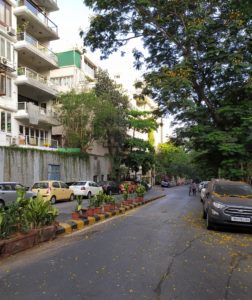
It is Day 10 of Lockdown 2.0. Supposed to last until April 15, the national lockdown has been extended till 3rd May. There are talks of extending it further if the situation does not improve. As of 24th April, 2020, India has a total of 23,502 COVID-19 cases with 723 deaths. Mumbai has the highest number of cases, accounting for 4,025 cases with a death toll of 283.
International flights to and from India were banned from 18th March while domestic travel was banned from March 24. No flights, trains, or buses ply between states. The government has allowed essential workers and those on trips to grocery stores and pharmacies to step out. They have to wear a mask at all times. Only essential workers are allowed to use city buses. It is a state of total and utter lockdown.
In a deeply unequal society, crises such as the pandemic always effect a disproportionate burden on the poor and disenfranchised. While the recession has dealt a blow to India’s sprawling informal sector, the lockdown has also severely restricted the socio-psychological lives of the urban poor. In a space-starved city such as Mumbai, open spaces have never been more precious. While the middle and upper class has access to gardens, balconies, and terraces, those who had no recourse other than public spaces such as streets, parks, and plazas suffer. In the densely packed slums of Mumbai, there is no concept of the boundary between public and private space—personal lives spill over onto the narrow criss-crossing lanes, with residents cooking, washing, playing, and gossiping outside their homes. How do we enforce a lockdown there?
It doesn’t help that “lockdown” is a nebulous term—while “curfew” and “quarantine” have established legal and executive connotations in India, “lockdown” does not. Unlike a curfew, the onus of staying home is on the citizen, and those who are seen outside seemingly purposeless are questioned. In this ambiguity, law enforcers tend to default to class assumptions. The rich man in a car out for a joyride may pass by checkpoints, but the poor man walking to the pharmacy may be beaten up.
This is precisely why the police will politely request me to walk my dog inside the building complex, but will beat to death a Muslim teen on his way to buy biscuits; why a resident jogging in a containment zone will be verbally reprimanded via loudspeaker but a vegetable vendor plying her goods in the same zone will have her cart forcibly overturned. Police in India do not carry arms, their main weapon of choice is the lathi (stick). There are daily reports on the news about lockdown violators being lathi-charged or like mischievous children, made to hold their ears and squat. The media covers these incidents extensively, with an air of righteous glee.
The violators are almost always lower class men. Is it because they are more likely to be “uneducated” about the crisis? Or do they deliberately flout lockdown norms? Or perhaps it is because they, as a group, are selectively targeted? (No women, even lower class women, appear in these images. Making a woman do stand ups and sit downs at the side of public road would be seen as “indecent”. It could also be that the number of female violators might be much lower than their male counterparts—public space in urban India has consistently been a more comfortable and acceptable domain for men). It is a fraught situation, with law enforcers themselves at times on the receiving end of violence.
Public space does not exist as a static entity—rather it is continuously in flux. The class and caste lines that divide our society, thus, find themselves suitably represented in the production of urban space. The pandemic has merely thrown this phenomenon into stark relief.
At a time when going to a grocery store is like preparing for war, compassion and social justice seem like distant dreams. A recent incident reminds me, however, that if public space is what we make of it, perhaps there’s some hope.
I’m outside my building, walking my dog. A policeman patrols the road on foot.
Four youths on a pair of motorbikes point at the policeman and draw near us. Their faces are covered. The policeman cuts his eye to them and frowns. I brace for conflict.
“Sir,” one of them calls out. “Will you have some chai?” I hadn’t noticed that he was holding a tea kettle.
“No, thank you.” He smiles.
They move on.
Saanchi Saxena is an urban policy researcher based in Mumbai. Her research area is a synthesis of urban anthropology and feminist geography, with interests spanning space, gender, and right to the city.


